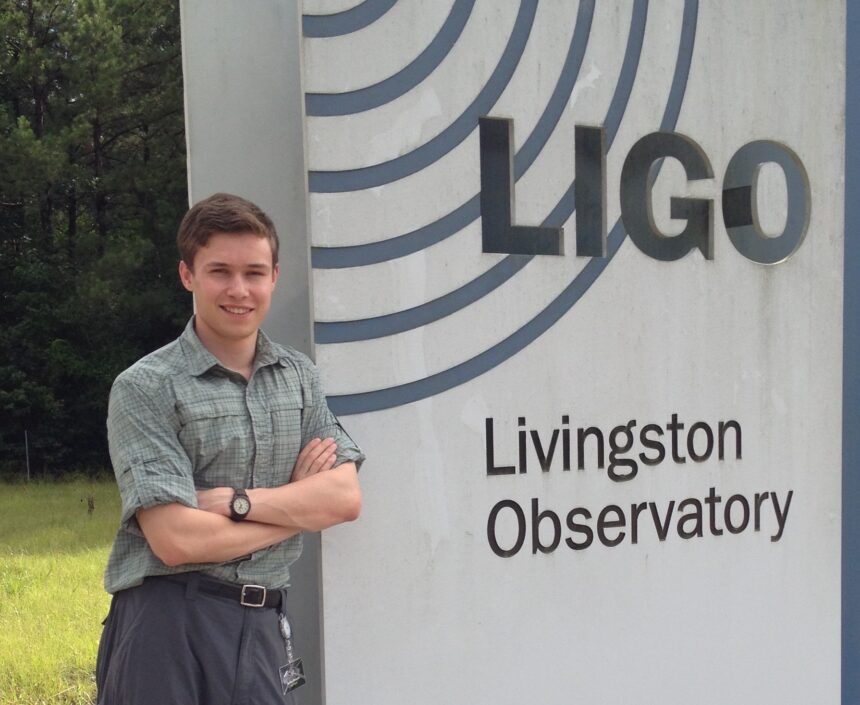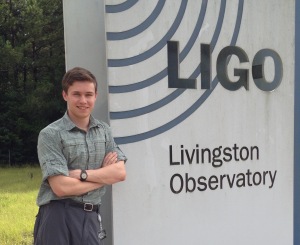Joshua Ramette | Courtesy
In the largest project ever funded by the National Science Foundation, scientists have found evidence confirming Albert Einstein’s theory of general relativity. Among the hundreds of collaborators is junior Joshua Ramette, whose research over the summer contributed to the first-ever detection of gravitational waves.
The Laser Interferometer Gravitational-Wave Observatory, or LIGO, uses a high-powered laser beam reflected across a series of mirrors to detect gravitational waves, a phenomenon predicted in Einstein’s work. The merging of black holes located billions of light years away from the Earth produced gravitational waves, which cause cause tiny distortions in space. Until now, these waves were not observable. LIGO scientists observed the first gravitational waves Sept. 14, 2015 and publicized their findings Feb. 11 in a press conference.
The promise of working on what Ramette called “one of the premier physics experiments in the world” spurred him to apply for the summer internship.
“It’s very interesting because it’s an experiment you can do with general relativity, so it relates to some of the most fundamental physics we can grasp right now,” Ramette said.
The main laser beam travels through a prism, splitting the beam in two. These offshoots travel down two four-kilometer tubes, reflecting across a series of finely tuned of mirrors and into a sensor. When a gravitational wave passes through the earth, the space inside the tubes is distorted, altering the pattern that the laser creates on the sensor. Each mirror is carefully suspended to isolate the system from the seismological activity of the earth.
In order to obtain accurate measurements, the system’s mirrors must carefully be calibrated so as not to distort the laser’s path.
“The high power main laser beam heats the mirrors upon reflection, causing problems for the optics,” Ramette said.
Over the summer, Ramette worked with a team at the LIGO Livingston Observatory in Louisiana to help correct the temperature of the mirrors using a device called a ring heater to standardize the temperature throughout each mirror. In order to do this, Ramette modeled the heating patterns from the ring heater using mathematical equations and computer software. Then, the team compared the models to the actual temperature readings in the mirrors.
Their project built on the research of two scientists in the 1990s, who worked out the mathematics behind the problematic temperature change caused by the laser beam. Working off their data, Ramette and the others created and tested the models necessary to stabilize the mirror temperatures and increase LIGO sensitivity.
“They figured out how the heating from the main laser beam works,” he said. “I figured out how the ring heater works.”
Ramette has submitted the work to the journal “Applied Optics” and is currently in the process of publishing a paper.
The extremely sensitive LIGO instruments currently are only able to detect large gravitational waves, but Professor of Physics Ken Hayes said future work may allow for the detection of smaller gravitational waves.
“The technology of LIGO is astounding,” he said.
David Reitze, LIGO Laboratory Executive Director, called LIGO’s detection of gravitational waves one of the largest advancements in physics since Galileo first pointed his telescope toward the stars.
“This is not just about the detection of gravitational waves,” he said at the press conference. “That’s the story today, but what’s really exciting is what comes next. I think we’re opening a window on the universe — a window of gravitational wave astronomy.”


